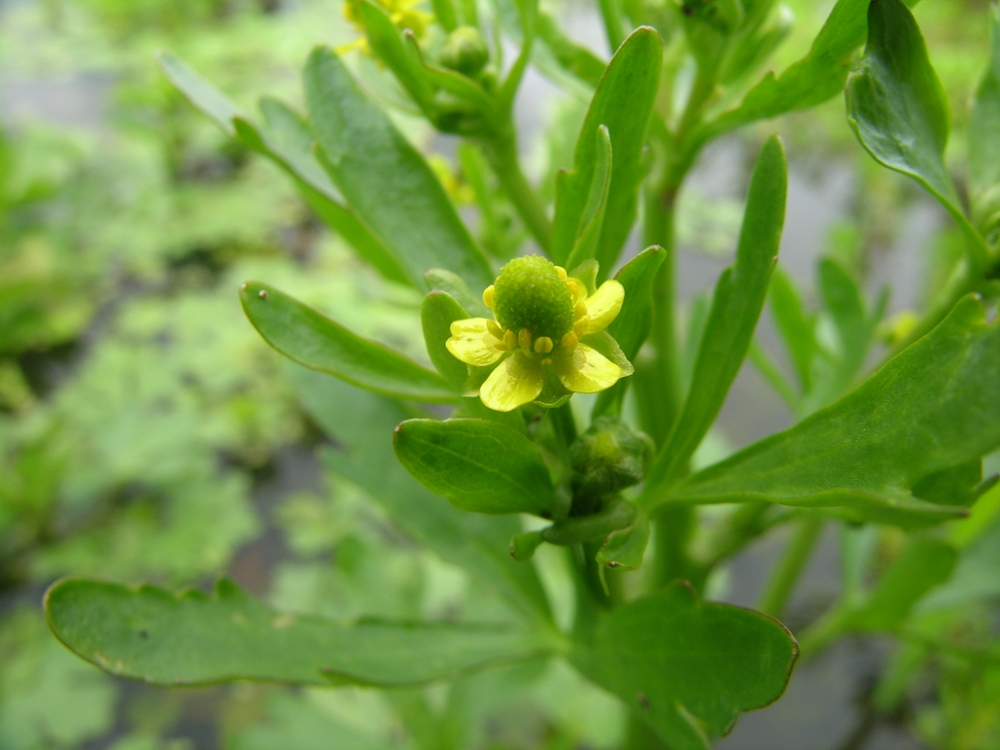

Often forms extensive colonies of plants. Flowers large, 2-5cm across and leaves long and grass-like.Ī very common plant of damp woodland and other damp and shady places. A much larger plant than Lesser Spearwort, growing to over a metre in height at times. Also sold as a garden plant so may occasionally be found in village ponds where planted. Once common in wetland habitats but now scarce and only found in any frequency in parts of the Norfolk Broads. Petals narrower than those of other buttercups and leaves lance-shaped with strongly tapered bases. Plants typically grow to around 50cm in height. Widespread in well-preserved wetlands, especially in acidic bogs and wet flushes. Flowers with small petals and a swollen cluster of carpels in the centre. A hairless plant with basal leaves that are very like those of Celery. Tolerant of a certain amount of saltwater and especially common in the Fens and coastal wetlands. Basal leaves three-lobed upper leaves deeply cut almost to the veins.Ĭelery-leaved Buttercup Ranunculus sceleratusĪ common plant of wetlands where it can be found growing on damp mud. The flowers of this species have rather irregular petals with flowers occasionally perfect, but more often having unevenly-sized or much reduced petals, or even no petals at all. Goldilocks Buttercup Ranunculus auricomusĪ widespread but uncommon species of old woodland and shady places. Most easily told by the seed capsules which are covered in spines. Basal leaves narrowly lobed, upper leaves deeply dissected, rather like those of Goldilocks Buttercup. Some recent projects have attempted to re-establish the species. Occasional as an arable weed but not extremely rare with few recent records. Stems lengthen as seed capsules develop and bear narrower leaves than those of the basal rosettes.Īn ancient introduction, perhaps first appearing in Roman times. The flowers are tiny, 3-6mm across and petalless, or with one or two, greatly reduced petals. A tiny plant which forms small rosettes of leaves tight to the ground. Now extirpated in Cambridgeshire and Norfolk and confined in Suffolk to a handful of coastal sites. Small-flowered Buttercup Ranunculus parviflorusĪ rare native of dry, usually regularly trampled or tightly grazed locations. Hairy Buttercup is also much more hairy, with hairs on all parts, especially the stems and leaf petioles. Hairy Buttercup is an annual that does not develop the bulbous base found in the perennial Bulbous Buttercup. Easily confused with Bulbous Buttercup as the two species are very similar, especially hairier forms of Bulbous Buttercup. The base of the plant is whitish and slightly swollen, giving it a rather bulbous look this can be detected by feeling carefully at the base of the plant, without the need to dig plants up.Ī native species of coastal grazing marshes and often common in such habitats. Sepals on open flowers are fully reflexed against the stem and not held against the petals. Leaves rather variable with some more deeply cut than others, but usually clearly three-lobed. Flowers with sepals flattened against the petals.Ī native species of grassy places and especially common in unimproved grasslands such as old commons and churchyards. Spreads by underground rhizomes to form extensive mats of three-lobed leaves, these leaves with conspicuous pale marks on them. Also frequently on grassy paths and rides in damp woodland and as a weed of damp farmland. Leaves very deeply cut almost to the veins.Ī very common native of wet grassland and the edges of ponds and other wetlands. Flowers with sepals flattened against the petals. A tall-growing species, sometimes to 100cm im height where not mown.


Other species can be identified by a combination of flower and leaf detail.Ī very common and often abundant species of grassy commons and roadsides on all but the most acidic soils and especially favouring damper soils. The flowers of the first few species on this page are all rather similar, but the position of the sepals can be important. As such, the habitat can be an integral part of the identification. Some species may also be found in wetlands, while others are woodland species. Our common species of buttercup can be abundant in all kinds of open, grassy places. The toxicity of buttercups means that they get left by grazing stock and buttercup species soon become abundant in overgrazed grassland. Buttercups are such an integral part of the countryside that they must be known by everyone, but evolution has provided us with a bewildering number of species to sort out! These are key species in the family Ranunculaceae, a family that contains a number of poisonous species.


 0 kommentar(er)
0 kommentar(er)
